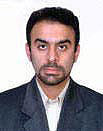full article:
Dear Editor
We thank Hans Husum for his interest for our article1. The correlation between Injury Severity Score (ISS) and Physiological Severity Score (PSS) was calculated as Spearman's rho, because the ISS is a discontinuous variable. Spearman's rho was ÷0.401, p <0.0005. This indicates that when the anatomical injury severity increases the physiological derangement is increased, which should be of no surprise.
We agree that the PSS2 is an approximation for the Revised Trauma Score (RTS)3. Indeed, the PSS has severe drawbacks because it employs cut-off values for blood pressure and respiratory frequency that are different from the original PTS. Despite this, the PSS was able to predict mortality to a certain degree. The area under the curve when constructing a receiver operating curve for PSS as test variable and death as outcome and excluding victims found dead was calculated to be 0.615 with 95% CI 0.48 to 0.78. This indicates moderate predictive value of the PSS.
We agree that a simple diagnostic index is easier to use compared with a more complex index; however, we wonder why the simplification did include not only the assessment of mental status but also the application of different cut-off values as compared with the original scale, which will inevitably confound comparisons. We did, however, decide to apply the PSS to our data to allow meaningful comparisons with the findings from similar training programs in the region4.
Masoud Saghafinia, PhD
Trauma Research Center
Baqiyatallah University of Medical Sciences,
Tehran, Iran
References
1. Husum H. Comment on: Improving trauma care in rural Iran by training existing treatment chains. Rural and Remote Health 2008; 9: 1226. Available www.rrh.org.au (Accessed 3 June 2009).
2. Husum H, Gilbert M, Wisborg T, Heng YV, Murad M. Respiratory rate as prehospital triage tool in rural trauma. Journal of Trauma2003; 55: 466-470.
3. Champion HR, Copes WS, Sacco WJ, Lawnick MM, Keast SL, Bain LW Jr et al. The Major Trauma Outcome Study: establishing national norms for trauma care. Journal of Trauma 1990; 30: 1356-1365.
4. Wisborg T, Murad MK, Edvardsen O, Husum H. Prehospital trauma system in a low-income country: system maturation and adaptation during eight yearsJournal of Trauma 2008; 64: 1342-1348.
